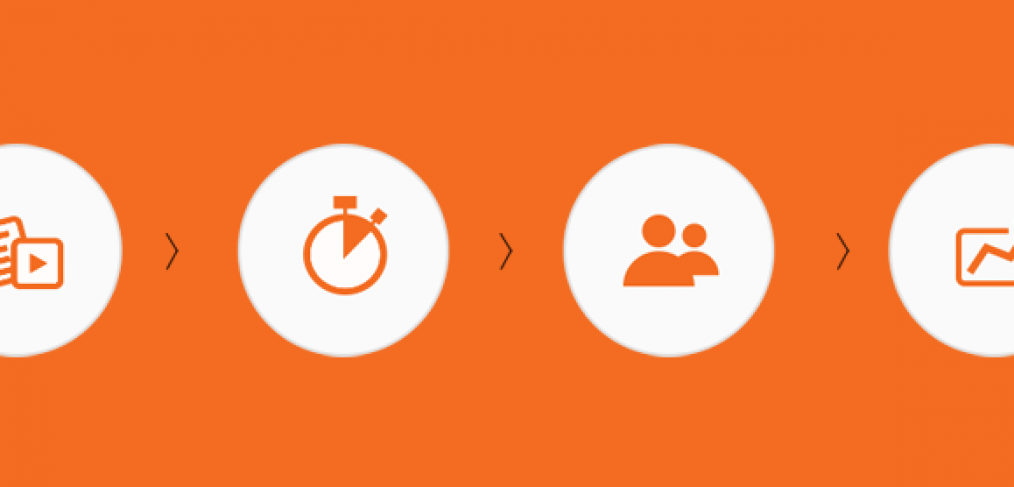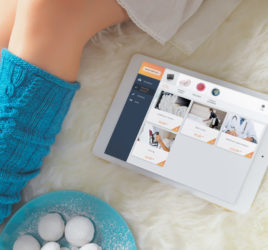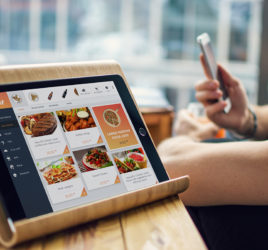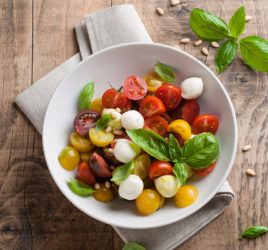
Savings à la carte
Menus, wine charts, price lists, daily menus and dessert menus printed out on rice paper, bound in leather with gold letters, or those printed out by a regular printer and put in plastic envelopes – they are responsible for the first impression. A nice looking, elegant menu, from which you can order everything, equipped with high quality images, is a feature of a good restaurant. But the fake image of a fine and expensive place will be shattered by grease and wine stains on the paper of the menus. Especially if it turns out that only a few dishes are available out of the entire offer, and basically the waiter is the only one who knows what is really offered. Anyone in the catering business knows how much effort and money needs to be invested in menus, so that everything is always up to date.
Things are made easier with digital prints, which is a better investment if you need a small amount of prints. But, how can you avoid a situation like this: while you wait for the printing of the menus containing roast with blueberry cream, the blueberry season can pass. How does one avoid adding additional papers with the daily offer, which are, in most cases, printed out on an office printer in the bookkeeping office of the restaurant? You don’t, you can’t, as long as you use prints.
Apart from showing a whole lot of additional information, a digital menu on a tablet can be quickly updated, several times a day, whenever something changes in the kitchen. So, instead of calling your designer and making arrangements about the changes, preparation for printing, taking everything to the printing office, adding papers to the menu, and being constantly frustrated about the changes, you make changes in the digital menu while having coffee, by simply touching the screen.
If everything was to be roughly summed up, the calculation would look something like this: Say that the average, good looking menu, with fine covers, where you can add pages costs 30$ (the booklet alone costs 10$). With the costs of design and print preparation, the first 30 menus cost more than 1.000$. If the offer is changed four times a year, as the seasons change, the print of the booklet (10 x 30 x 4) costs another 1.200$, and the designer will have lots to do. When you add the yearly cost of prints of the additional papers with daily offers from 200 – 400$, one needs to pay about 2.000$ for menus, only for the first year, and each coming year from 1.300 to 1.500$. This amounts to nearly 8.000$! For digital menus, you only need to buy tablets and forget about all the printing complications!
Calculating how much you save by not printing is a piece of cake, but we never mentioned the time and the hourly pay of the chef, who has to be very busy about the changes of the printed menus. We should not forget the waiters: digital menu could save a lot of their working hours too. The customer who has DaShef on the table will easily pick the dish he or she wants, the wine will be automatically recommended, and so will the dessert and the salad… They will have fun looking at the ingredients, what the offer looks like, if there are allergens – questions people usually ask the waiters. With DaShef, you can save up from 11 to 19 minutes while serving guests. While they study the offer, look at the pictures of courses and drinks, they will often decide to order something they didn’t plan, especially if the dish was ordered by a celebrity, who also gave their recommendation. This all, along with faster service, adds up to a higher income by 15 – 20%.
The digital menus, along with everything one invested in them, pay off in about six months. And, honestly if there are digital ovens, not having digital menus makes no sense.



